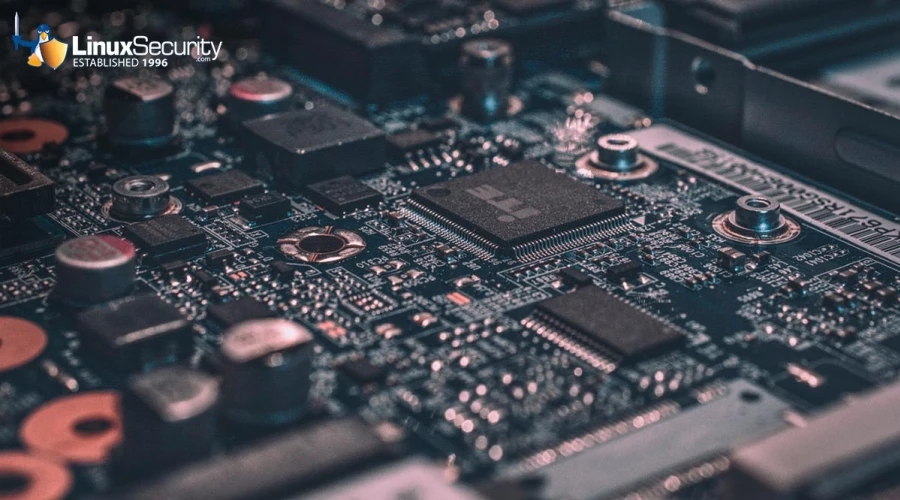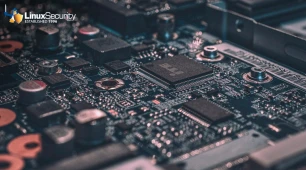
As a Linux security admin, staying abreast of the latest advancements in kernel development is critical to creating an efficient and safe system. With the Linux 6.12 LTS release bringing many performance gains and improved security features over its predecessor, 6.6 LTS, upgrading could significantly enhance system stability and efficiency.
Adopting a new kernel version should not be taken lightly; it requires extensive testing and careful planning to ensure compatibility and stability. This may involve validating it within a controlled environment, measuring performance improvements over time, and creating a backup/rollback plan.
In this article, we'll look at the key advantages of the Linux 6.12 LTS kernel over its predecessor 6.6 LTS release and ways of seamlessly incorporating updates into your current infrastructure - so you can stay up-to-date and take full advantage of this latest release!
Improved System Performance
 Linux 6.12 LTS stands out due to its improved system performance. Kernel updates often bring optimizations designed to boost overall efficiency. With 6.12 LTS versions, this includes memory management optimizations, CPU scheduling improvements, and simplified I/O operations. All of these enhancers work together to ensure your systems perform more efficiently under any workload condition.
Linux 6.12 LTS stands out due to its improved system performance. Kernel updates often bring optimizations designed to boost overall efficiency. With 6.12 LTS versions, this includes memory management optimizations, CPU scheduling improvements, and simplified I/O operations. All of these enhancers work together to ensure your systems perform more efficiently under any workload condition.
Consider scenarios in which high-performance computing is crucial, such as data centers or environments running virtual machines. Improved memory management can reduce latency and increase throughput for more responsive systems. Optimized CPU scheduling ensures processes receive CPU time more effectively to minimize wait times while improving multitasking capabilities. As a security admin, knowing these improvements lead to more robust and efficient processing can help deliver a better user experience while upholding all standards for safe operations.
Enhanced Security Features
Any new kernel release promises enhanced security, and Linux 6.12 LTS is no exception. Security is ever-evolving, as new vulnerabilities are constantly discovered. Upgrading to LTS versions means you will receive patches for known vulnerabilities found in earlier releases, thus decreasing exploit potential and helping maintain a secure environment.
Linux 6.12 LTS offers numerous security updates designed to fortify your system against various forms of attack, from kernel patches and fixes for access control mechanisms to improvements in module loading security. Operating with the most up-to-date kernel version helps ensure you remain ahead of potential security threats while giving you peace of mind knowing your systems are fortified with cutting-edge security innovations.
Better Hardware Support
 Linux kernel developers strive to ensure the kernel can support various hardware. This is essential in an era when technological innovations keep revealing new components and capabilities. With Linux 6.12 LTS' extended hardware support, your systems will be able to take full advantage of emerging technologies.
Linux kernel developers strive to ensure the kernel can support various hardware. This is essential in an era when technological innovations keep revealing new components and capabilities. With Linux 6.12 LTS' extended hardware support, your systems will be able to take full advantage of emerging technologies.
6.12 LTS provides improved driver and kernel support for more modern CPUs, GPUs, storage devices, and networking cards, increasing performance and functionality. This is especially beneficial in data centers that rely heavily on cutting-edge hardware for resource-intensive applications. Better hardware support also means fewer compatibility issues, smoother operations, and fewer headaches when troubleshooting.
Stability and Reliability
One of the key draws of an LTS version is its promise of stability and reliability, which is ensured through extensive testing and long-term support. Linux 6.12 LTS continues this tradition by offering an unbreakably secure environment capable of handling production workloads reliably.
Admins should upgrade to 6.12 LTS to take advantage of all bug fixes implemented since 6.6 LTS. These fixes not only increase overall system stability but also address specific issues that were disrupting earlier versions. In mission-critical environments, having an available and stable system is vital, and upgrading to an LTS version provides a secure, stable, and reliable way forward.
Notable Performance Enhancements
Linux 6.12 LTS offers numerous direct performance upgrades, from faster filesystem operations to improved networking performance. Such advancements include faster read/write operations for quicker and more efficient data access. At the same time, improved networking performance allows for increased throughput with reduced latency for applications that rely heavily on fast data transfers.
As part of its process-handling capabilities, the new kernel includes optimizations in context switching, which is the ability of the CPU to switch between tasks efficiently. Efficient context switching ensures systems can manage multiple processes more effectively while decreasing overhead costs and increasing performance.
Energy Efficiency
 Power management is often neglected when considering kernel performance, yet it plays an integral part in saving energy and prolonging hardware lifespan. Improving power management practices can result in more energy-efficient operations for data centers or large deployments where power costs represent a substantial cost factor.
Power management is often neglected when considering kernel performance, yet it plays an integral part in saving energy and prolonging hardware lifespan. Improving power management practices can result in more energy-efficient operations for data centers or large deployments where power costs represent a substantial cost factor.
Linux 6.12 LTS includes updates designed to increase power efficiency, so your systems will consume less electricity while providing greater performance. You will save on costs and help reduce the environmental impacts of operations while prolonging hardware lifespan by minimizing heat production and wear and tear.
Driver updates are an integral component of kernel improvement. They ensure the kernel can interact more efficiently with hardware components for improved performance and reduced compatibility issues. With Linux 6.12 LTS, you can expect updates for various hardware components.
Updated network drivers lead to more stable and quicker network connections, while updated storage drivers result in quicker disk operations and increased reliability. As a security admin, having the latest drivers ensures your systems are less likely to experience hardware-related issues, leading to smoother and more dependable operations.
Planning Your Upgrade
Due to all the advantages of Linux 6.12 LTS, careful consideration and planning must go into an upgrade process. First and foremost, you must test your new kernel in a controlled environment before rolling it out into production to identify any potential compatibility issues with existing software and hardware.
Benchmarking is also an integral component of this process. By comparing the performance of both kernels, benchmarking enables you to gather evidence supporting upgrades based on tangible benefits rather than assumptions.
Backup and rollback plans are essential safety nets when switching kernel versions. Before making significant modifications, ensure you have sufficient backup copies of your current system for restoration if upgrading goes wrong. If something unexpectedly breaks, having an efficient plan allows you to return quickly to an earlier stable state without delay, minimizing downtime or disruptions.
Staying Up-to-Date
 The Linux community is ever-changing, so keeping abreast of new developments, patches, and potential issues is essential for making informed decisions. Checking official Linux Kernel mailing lists, release notes, and resources like LinuxSecurity.com regularly can provide invaluable insights that could prevent potential challenges ahead.
The Linux community is ever-changing, so keeping abreast of new developments, patches, and potential issues is essential for making informed decisions. Checking official Linux Kernel mailing lists, release notes, and resources like LinuxSecurity.com regularly can provide invaluable insights that could prevent potential challenges ahead.
Engaging with the community can also offer invaluable support and guidance. Experienced administrators often share their advice for common issues, offering invaluable assistance for troubleshooting and best practices.
Our Final Thoughts on Achieving Peak Efficiency & Security with Linux 6.12 LTS
Linux 6.12 LTS provides numerous performance and security benefits that make it an attractive upgrade from Linux 6.6 LTS, including improved system performance, increased security features, enhanced hardware support, and driver updates. Careful planning, thorough testing, and an effective backup strategy will ensure a smooth transition. By remaining informed and proactive throughout this transition process, you can fully capitalize on its potential and give your users a more robust, efficient, and secure environment.
Are you planning to make the switch? Which updates or improvements are you most excited about? Let us know @lnxsec!


















